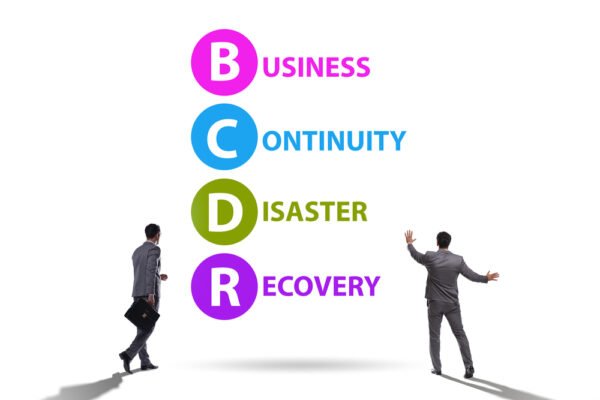A Business Continuity Plan (BCP) Test Report is a document that outlines the results of testing the effectiveness of a business continuity plan.
Testing aims to ensure that the BCP will function as intended during an actual disruption. The report typically includes the following elements:
- Executive Summary: A brief overview of the test, its objectives, and key findings.
- Test Objectives: Specific goals that the test was designed to achieve, such as validating recovery strategies, assessing the ability of staff to perform critical functions, or identifying gaps in the plan.
- Test Methodology: Details on how the test was conducted, including the type of test (tabletop exercise, simulation, full interruption, etc.), the scenario used, and the participants involved.
- Test Scenarios: Descriptions of the hypothetical events used during the test and how they were applied to evaluate the BCP.
- Observations and Findings: A thorough account of what occurred during the test, including any issues encountered, the response of the participants, and the effectiveness of the plan and its components.
- Recommendations for Improvement: Based on the test results, a list of suggested enhancements to the BCP to address any weaknesses or gaps identified during the test.
- Action Plan: A timeline and responsibilities for implementing the recommended improvements.
- Appendices: Any supporting materials, such as detailed test results, participant feedback, and reference documents.
The Business continuity exercise report template, for example, is a simple document that allows tracking issues raised during business continuity exercises, which can be a starting point for a BCP Test Report.
It’s important for organizations to regularly test their BCP and update the plan based on the test report to ensure that it remains effective and relevant to the current operating environment.
The Business Continuity Plan Test Report is an essential document that provides an overview of the testing process and outcomes of a business’s continuity plan.

This report plays a crucial role in assessing the plan’s effectiveness and identifying any gaps or areas for improvement.
From the definition of a business continuity plan to the execution of the test, this discussion will delve into the various aspects of the report, shedding light on its purpose, planning, and execution.
Stay tuned to discover how this report can help organizations ensure their readiness in the face of unforeseen disruptions and maintain seamless operations.
Key Takeaways
- A Business Continuity Plan (BCP) test report provides an overview, documents the testing process, supports decision-making, and enhances readiness.
- The purpose of a BCP test report is to evaluate preparedness, identify improvement areas, and enhance recovery ability.
- BCP testing is important because it ensures plan effectiveness, identifies weaknesses, and validates recovery processes.
- BCP testing benefits include identifying gaps, improving response times, enhancing employee readiness, and increasing organizational resilience.
Definition of a business continuity plan (BCP)
A business continuity plan (BCP) is a comprehensive strategy designed to ensure the continued operation of a business in the face of potential disruptions or disasters.
It outlines the necessary steps and procedures to be taken to minimize the impact of such events and maintain business functions.
Testing a BCP is of utmost importance to assess its effectiveness, identify any gaps or weaknesses, and make necessary improvements to enhance the organization’s preparedness for unforeseen events.
Importance of testing a BCP
Testing a business continuity plan (BCP) is of utmost importance in ensuring its effectiveness and the organization’s ability to withstand potential disruptions. Thorough tests can identify BCP weaknesses and gaps for improvement.
Testing helps validate the recovery processes, communication channels, and resource allocation, ensuring personnel are well-prepared and equipped to respond to disruptive events.
Ultimately, testing a BCP helps maintain operational resilience and minimizes the impact of potential disruptions on the organization.
Purpose of the test report
The purpose of the test report is to provide an overview of the test objectives and to explain the scope and limitations of the business continuity plan test.
It documents the testing process and its outcomes, allowing stakeholders to assess the plan’s effectiveness.
The report should be concise and clear, and it should provide relevant information to support decision-making and improvement of the plan.
Overview of the Test Objectives
To clearly understand the purpose behind the test report, this section presents an overview of the test objectives.
Business continuity plan testing assesses companies‘ preparedness in handling various events and disruptions such as natural disasters, power outages, or incidents.
The objectives include evaluating the effectiveness of actions taken, identifying areas for improvement, and answering critical questions to enhance the organization’s ability to respond and recover from disruptive events.
Explanation of the scope and limitations
To provide a comprehensive assessment, the test report aims to clearly explain the scope and limitations of the business continuity plan testing.
The scope includes evaluating the effectiveness of backup systems, the adequacy of business impact analysis, and the review of business continuity plans.
The limitations involve the availability of key personnel, potential threats not covered in the testing, and the integration of the business continuity plan with the disaster recovery plan.
Regular testing ensures the ongoing effectiveness of business continuity planning.
Test planning and preparation
The success of a business continuity plan test relies heavily on effective test planning and preparation. This includes selecting experienced and knowledgeable test team members who can contribute their expertise to the process.
Additionally, the identification of relevant test scenarios and simulations, as well as the allocation of necessary resources, are crucial in ensuring that the test is comprehensive and realistic.

Selection of test team members
Experienced and qualified individuals are essential for effectively executing the test planning and preparation stage, specifically in selecting test team members. The selection process should consider the following:
- Skills and expertise in handling various situations such as data center outages and bomb threats.
- Ability to provide valuable feedback to improve the business continuity management system.
- Knowledge of compliance requirements and the ability to assess critical components through tabletop exercises.
Identification of test scenarios and simulations
To effectively plan and prepare for testing, identifying test scenarios and simulations is crucial in ensuring the business continuity plan’s readiness.
This involves determining the scenarios to test, such as comprehensive business continuity plans, disaster recovery scenarios, or mobile recovery locations.
Recovery time, communication plans, and emergency communication strategies should also be considered. These simulations should be designed to represent a realistic threat and can range from single-team simulations to actual exercises.
| Test Scenarios | Simulations |
|---|---|
| Comprehensive BCP | Single-team simulation |
| Disaster recovery scenarios | Actual exercises |
| Mobile recovery location | |
| Recovery time |
Allocation of resources for testing
Allocation of resources for testing is a crucial step in the test planning and preparation phase of the business continuity plan. To ensure a successful testing process, the following resources should be allocated effectively:
- Skilled personnel: Trained individuals should be assigned to manage and execute the testing activities.
- Testing tools and equipment: Adequate tools and equipment should be provided to support the testing process.
- Time and budget: Sufficient time and financial resources must be allocated to complete comprehensive testing, including business continuity exercises and recovery strategies.
Execution of the BCP test
The execution of the BCP test involved using a well-defined testing methodology to ensure a thorough evaluation of the plan’s effectiveness.
This included conducting tabletop exercises with key personnel simulating different scenarios to assess their response and decision-making capabilities.
Description of the testing methodology used
The testing methodology employed for executing the Business Continuity Plan (BCP) test involved a systematic and comprehensive approach to assess the effectiveness and readiness of the plan in mitigating potential disruptions to business operations.
The methodology used in conducting the test is as follows:
- Pre-test planning involved defining objectives, identifying test participants, and establishing test scenarios.
- Test execution: The BCP was implemented and activated to simulate a real-life disruption, evaluating its effectiveness in maintaining critical business functions.
- Post-test evaluation: A thorough analysis of the test results was conducted to identify areas of improvement and make necessary adjustments to the plan.
Conducting tabletop exercises with key personnel
Tabletop exercises were conducted with key personnel to execute the BCP test and assess the plan’s effectiveness. These exercises aimed to evaluate the plan’s ability to meet continuity objectives.
Senior management actively participated to identify any gaps or deficiencies in the plan and discuss potential corrective actions.
The exercises also highlighted the importance of business resilience and the need to have different types of business continuity strategies in place.
Emergency contacts were verified, and action items were assigned to address an inadequate plan and enhance preparedness for potential network outages.

Conclusion
The BCP report is a vital resource to assess a company’s success.
It provides a comprehensive overview of the test planning preparation and execution of the BCP test.
Regular testing and analysis of results can identify weaknesses in BCPs and improve operations during disruptions.

Chris Ekai is a Risk Management expert with over 10 years of experience in the field. He has a Master’s(MSc) degree in Risk Management from University of Portsmouth and is a CPA and Finance professional. He currently works as a Content Manager at Risk Publishing, writing about Enterprise Risk Management, Business Continuity Management and Project Management.

